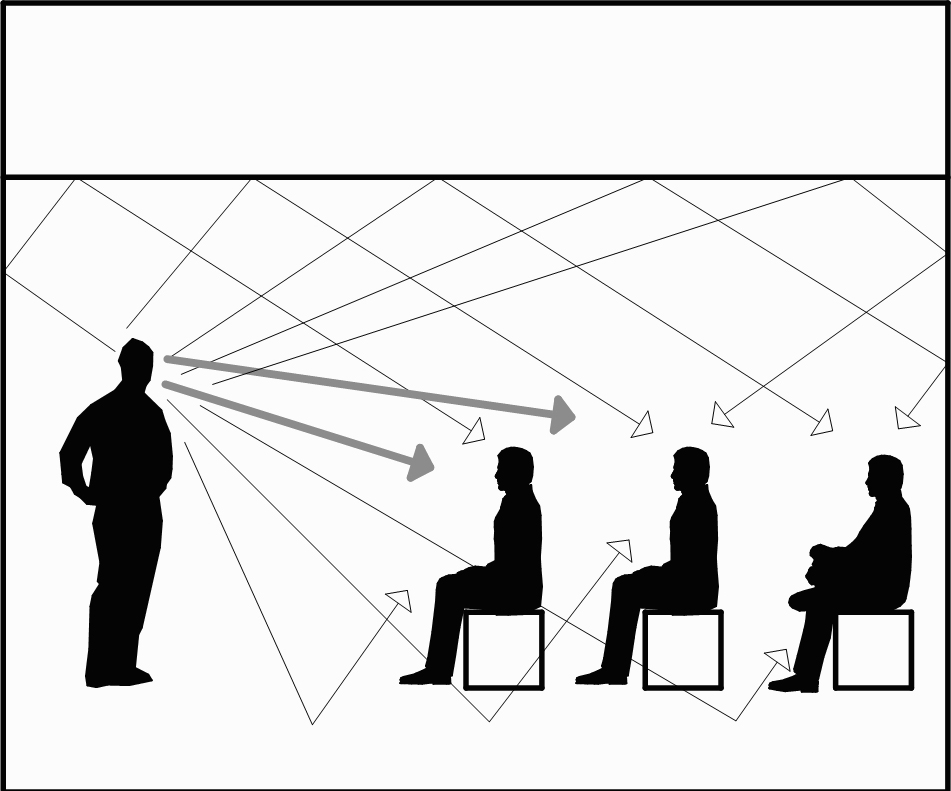| Recommended reverberation time, RT (sec) | Satisfactory design sound level, dB (A) | |
|---|---|---|
| Classrooms - primary | 0.4 | 35 |
| Classrooms - secondary | 0.5 to 0.6 | 35 |
| Laboratories - teaching | 0.5 to 0.7 | 35 |
| Lecture theatres | 0.7 to 1.0 | 30 |
| Libraries | 0.4 to 0.6 | 40 |
| Assembly halls | 0.6 to 0.8 | 30 |
| Gymnasiums | 0.8 to 1.2 | 45 |
| Music practice rooms | 0.7 to 0.9 | 40 |
| Office areas | 0.4 to 0.6 | 40 |
| Kitchens and Hygiene Areas | 0.6 to 0.8 | 50 |
Much of what is learnt in school happens through hearing and listening. Primary school pupils are spending on average 4-5 hours per day in classrooms. It is vital that classroom learning environments have optimal acoustics for ease of listening and good intelligibility for all students.
Children, because they are neurologically immature and lack the experience necessary to predict from context, are inefficient listeners who require optimal conditions in order to hear and understand. Those who continually miss key words, phrases and concepts because of poor listening conditions are significantly disadvantaged.
Classroom design standards must consider what teaching activities occur inside the rooms during the course of a school day. Acoustical considerations must not inhibit teaching styles but facilitate the wide variety of teaching methods used. The ideal classroom should be acoustically friendly for all children regardless of abilities and for all the teaching styles in common practice today. Classrooms should not just be acoustically good when the child has normal-hearing and is sitting quietly on the mat close to the teacher. The room should also be acoustically friendly for the hearing-impaired student when there are high levels of noise because there is group discussion going on.

Noise levels in classrooms are undoubtedly higher than in the past, and this is because children are encouraged to communicate with each other. Educationalists have realised the value of what children learn from each other through gathering information casually, so called ‘incidental learning’, and good hearing conditions are crucial for the children to communicate easily. The above is extracted from a published research report by Oticon on classroom acoustics To aide effective communication the room reverberation needs to be controlled to RT0.40 to 0.5 seconds and the signal to noise ratio must be approx 6dB over back ground noise levels.

Asona Classroom 60/40 system has been developed specifically for the classroom market, it features 60% Triton 25 NRC 0.95 absorber panels to control reverberation and back gound noise levels and 40% hard Diffusion reflector panel to provide early reflections that aid speech intelligability, both panels are installed on a two way grid for economy and speed of installation. Tested performance show how the 60/40 system helps smooth out the sound absorption curve for optimal acoustics. More information concerning classroom acoustics please contact Asona.

